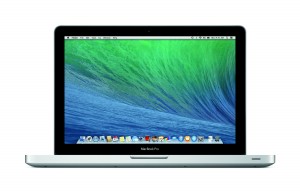Apple to use the ARM microarchitecture in newer Mac computers
Article
It’s Official: The Mac Is Transitioning to Apple-Made Silicon | Gizmodo
My Comments
This week, Apple used its WWDC software developers’ conference to announce that the Macintosh regular-computer platform will move away from Intel’s silicon to their own ARM-based silicon. This is to bring that computing platform in to line with their iOS/iPadOS mobile computing platform, their tVOS Apple TV set-top platform and their Watch platform that uses Apple’s own silicon.
Here, this silicon will use the ARM RISC instruction-set microarchitecture rather than the x86/x64 architecture used with Intel silicon. But Apple is no stranger to moving the Macintosh computing platform between microarchitectures.
Initially this platform used Motorola 680×0/PowerPC silicon which used a Motorola RISC instruction set microarchitecture. This platform initially had more chops compared to Intel’s x86 platform especially when it came to graphics and multimedia. Then, when Apple realised that Intel offered cost-effective microprocessors using the x86-64 microarchitecture and had the same kind of multimedia prowess as the Motorola processors, they moved the Macintosh platform to the Intel silicon.
But Apple had to take initiatives to bring the MacOS and Mac application software over to this platform. This required them to supply software development tools to the software-development community to allow programs that they write to be compiled for both Motorola and Intel instruction sets. They also furnished an instruction-set translator or “cross-compiler” called Rosetta to Mac users who had Intel-based Macs so they can run extant software that was written for Motorola silicon.
For a few years, this caused some awkwardness with Mac users, especially those who were early adopters, due to either the availability of software natively compiled for Intel silicon. Or they were finding that their existing Motorola-native software was running too slowly on their Intel-based computers thanks to the Rosetta instruction-set-translation software working between their program and the computer’s silicon.
Apple will be repeating this process in a very similar way to the initial Intel transition by the provision of software-development tools that build for Intel i86-64 based silicon and their own ARM-RISC based silicon. As well they will issue Rosetta2 which does the same job as the original Rosetta but translate i86-64 CISC machine instructions to the ARM RISC instruction set that their own silicon uses. Rosetta2 will be part of the next major version of MacOS which will be known as Big Sur.
The question that will be raised amongst developers and users of high-resource-load software like games or engineering software is what impact this conversion will have on that level of software. Typically most games are issued for the main games consoles and Windows-driven Intel-architecture PCs over Macs or tvOS-based Apple TV set-top devices, with software ports for these platforms coming later on in the software’s evolution.
There is an expectation that the Rosetta2 “cross-compiler” software could work this kind of software properly to a point that it can satisfactorily perform on a computer using integrated graphics infrastructure and working at Full HD resolution. Then there will be the issue of making sure it works with a Mac that uses discrete graphics infrastructure and higher display resolutions, thus giving the MacOS platform some “gaming chops”.
I see the rise of ARM RISC silicon in the tradition regular computing world and having it exist alongside classic Intel-based silicon in this computing space like what is happening with Apple and Microsoft as a challenge for computer software development. It is although some work has taken place within the UNIX / Linux space to facilitate the development of software for multiple computer types thus leading to this space bringing forth the open-source and shared-source software movements. This is more so with Microsoft where there is an expectation to have Intel-based silicon and ARM-based silicon exist alongside each other for the life of a common desktop computing platform, with each silicon type serving particular use cases.

